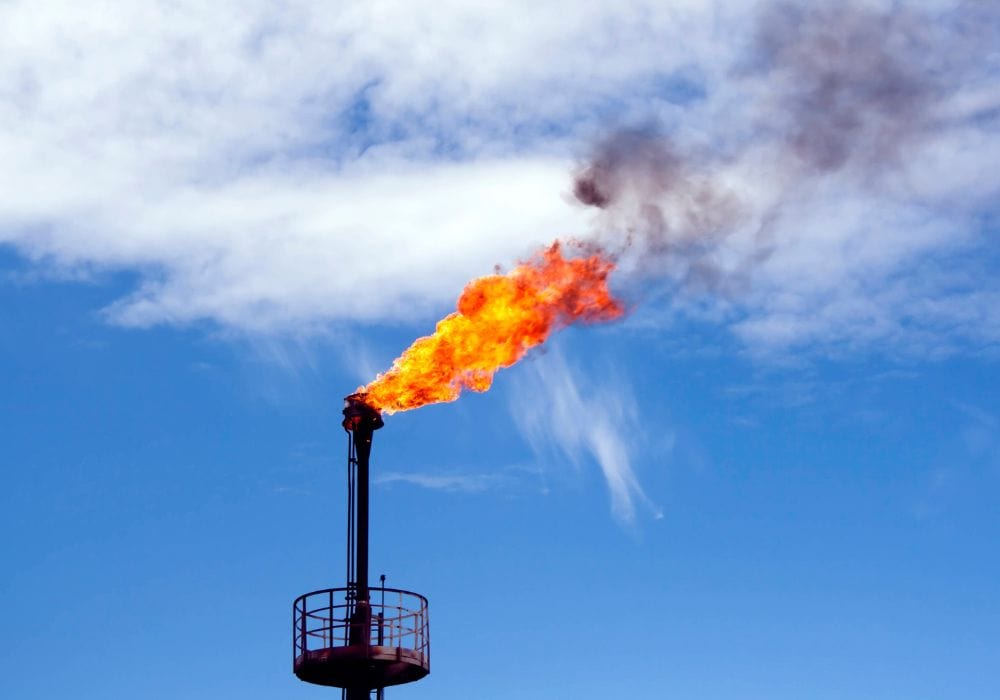The world’s methane emissions remained stalled near record levels in 2023, and Canada tied for seventh on the list of the top 10 emitters, the International Energy Agency (IEA) reported this week in the latest edition of its annual Global Methane Tracker.
The 120 million tonnes of emissions from fossil fuels, plus another 10 megatonnes from traditional uses of biomass, leave countries with a lot of work to do in very little time if they aim to drastically reduce their methane pollution by 2030. That’s after 50 of the world’s biggest fossil producers, including 29 oil and gas companies, pledged to essentially phase out methane emissions and end routine gas flaring by decade’s end in the early days of the COP28 climate summit in December.
“A 75% cut in methane emissions from fossil fuels by 2030 is imperative to stop the planet from warming to a dangerous level,” IEA executive director Fatih Birol said in a release.
The report says that new national pledges on methane would reduce emissions by about 50%. “However, in most cases, these pledges are not yet backed up by detailed plans, policies, and regulations.”
Methane is a shorter-lived greenhouse gas than carbon dioxide, but it carries about 84 times more warming potential over the crucial 20-year span when humanity will be scrambling to get climate change under control. The IEA says methane is responsible for about 30% of the rise in global temperatures since the beginning of the Industrial Revolution, and the top 10 polluters – all of them major oil and gas producers – accounted for 80 million tonnes in 2023, or two-thirds of the global total.
The biggest emitters were:
• United States, 13.3 megatonnes
• Russia, 11.2 Mt
• Iran, 6.0 Mt
• Turkmenistan, 5.2 Mt
• Venezuela, 3.0 Mt
• China, 3.0 Mt, with less than one-sixth the emissions intensity of Venezuela
• Algeria, 2.8 Mt
• Saudi Arabia, 2.4 Mt
• Canada, 2.4 Mt, with slightly higher emissions intensity than Saudi Arabia
• Iraq, 2.3 Mt
• Norway, which is listed on the IEA chart but with no emissions data
Oil was the biggest source of methane emissions in 2023, at 52 megatonnes, followed by gas at 27 megatonnes and coal at 37.
The IEA says that countries’ commitments on methane in 2023 put them in a position to begin reducing emissions soon, although those promises still fall short of what’s needed to hold average global warming to the Paris Agreement target of 1.5°C.
“I am encouraged by the momentum we’ve seen in recent months, which our analysis shows could make an enormous and immediate difference in the world’s fight against climate change,” Birol said in the release. “Now, we must focus on transforming commitments into action – while continuing to aim higher,” with “well-known policies and existing technologies” on tap to “reduce methane emissions from fossil fuels substantially.”
That means the coming years could bring considerable progress or far less.
“On one hand, more governments and fossil fuel companies have committed to take action on methane,” the IEA writes. “Global efforts to report emissions estimates consistently and transparently are strengthening, and studies suggest emissions are falling in some regions.”
However, “overall emissions remain far too high to meet the world’s climate goals,” the Paris-based agency warns. “Large methane emissions events detected by satellites also rose by more than 50% in 2023 compared with 2022, with more than 5 Mt of methane emissions detected from major fossil fuel leaks around the world – including a major well blowout in Kazakhstan that went on for more than 200 days.”
This story first appeared in The Energy Mix. Read the original article here.





